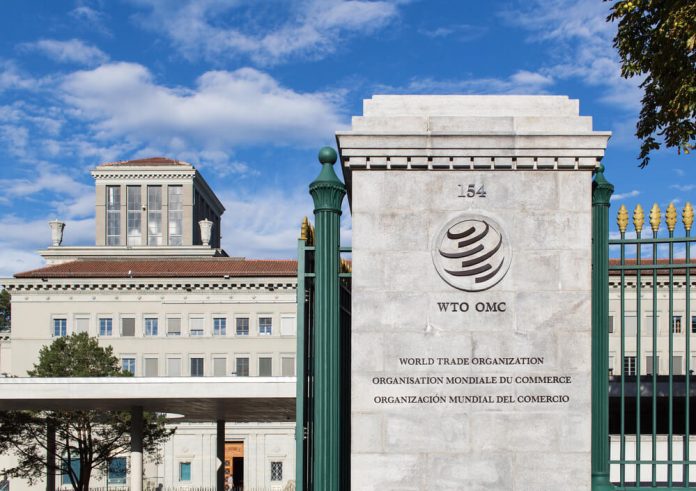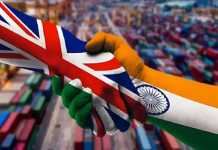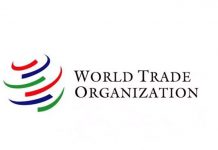This article is written by Sahil Aggarwal, currently pursuing B.A.LLB (Hons) from NALSAR University of Law, Hyderabad. This article explores the concept of export-led growth briefly and then produces potential suggestions that may be capable of producing a favourable export rate growth to a certain extent.
Table of Contents
Introduction
Import substitution is a concept that refers to an effort by countries to become self-sufficient by developing their own industries so that they can compete with exporting countries. This was a dominant strategy in the wake of the U.S. stock market crash in 1929 up until around the 1970s. However, the post-world war II period saw what would become a prominent trend towards further openness to international trade in the form of export promotion strategies. The realization was taken seriously by South East and East Asian Countries like Hong Kong, Singapore, South Korea, and Taiwan, and they subsequently saw the growth in terms of their economy. This is to say that export-oriented policies and strategies were proving beneficial to countries. In this context, this article begins with a presumption that these policies are beneficial for India as well and the recent turn of the Indian government will also show the inclination towards export-led policies. Hence, this article explores the idea of export-led growth briefly and produces potential suggestions that may in line with the WTO laws, be conducive to India’s economic growth.
Export-led growth: meaning and assumptions
Development economists recognized the potential impacts of export-oriented strategies and policies in fueling the growth of the national economy. The Export-led growth hypothesis purports the direct nexus between the increasing exports and the growth of the economy and emphasizes export expansion as one of the key determinants of economic growth. The policy of exhort-led growth is based on the assumption that the international market for a commodity is much wider than the country’s domestic market. On the other hand, the vast international market provides unlimited opportunities for output expansion. The high growth of the economy of the country is characterized by rapid expansion in exports.
However, it is relevant to point out that export expansion is not confined to those fortunate countries that hoard a large number of natural resources such as the oil-exporting countries. Rather, some of the developing countries have been able to expand their exports in spite of limitations in natural resources by initiating economic policies that shifted the resources from inefficient domestic manufacturing industries to export production. For instance, Singapore, South Korea, Taiwan are some of the countries that have been able to grow their economy through export expansion.
In this respect, the analysts and economists have provided a number of reasons why the export-oriented growth policies and strategy apparently increase economic development. Firstly, a developing country able to specialize in producing labour-intensive products may use this as a comparative advantage in the international market and this must also generate increasing employment. Secondly, in relation to the first one, the experience with multiple export-oriented countries shows that there was little to no disguised employment once labour-market regulations were dismantled and individual firms were incentivized to sell in the export market. Third, most developing countries have small domestic markets and the enterprises relying on the domestic demand result in uneconomically small, inefficient enterprises. Moreover, the enterprises will also be deprived of the incentives the international competition may provide in terms of efficient production techniques. Fourthly, it has been observed that the export-oriented policies and strategies are inconsistent with the impulse to impose detailed economic controls since the main focus remains incentivization of export of the product, thus working as a great stimulus and more efficient use of resources may result.
The capacity of a developing country’s entrepreneurs to adapt their resources and internal economic organization according to the pressures of world markets’ demand and international competition is an important connection between export expansion and the development of the country’s economy. In this sense, it equally becomes important that free international trade provides an environment that is conducive to the acceptance of new ideas, new wants and new techniques of production and methods of the organization from abroad.
Overview of Indian foreign trade policy
On April 1, 2015, Ms Nirmala Sitharaman unveiled the Foreign Trade Policy (FTP) initially, for the years 2015-2020, which recently got extended till March 2021. The policy envisaged increasing India’s exports of merchandise and services from $ 465.9 billion in 2013-14 to approximately $900 billion by 2019-2020. Let us briefly look at the provisions provided by this policy.
FTP 2015-20 provided a framework for increasing exports of goods and services as well as increased employment, by linking various incentives, procedures, and rules for the imports and exports of India with its programs and initiatives like ‘Digital India’, ‘Make in India’ and ‘Skills India’. Simultaneously, it sought to enable the country to respond to the challenges of the external environment, alongside keeping up with a rapidly evolving international trading architecture and make trade a major contributor to countries economic growth and development. It also introduced provisions for a stable and dependable mechanism to induce regular appraisals to rationalize imports and reduce the imbalance in the trade of the nation.
To correspond with the maxims and the guidelines provided by the World Trade Organization (WTO), the FTP also brought a change in its stance and it sought to consolidate all previous incentive schemes under two new schemes, namely, Merchandise Exports from India Scheme (MEIS) and Services Exports from India Scheme (SEIS). The former essentially aimed for the enhancement of the exports of specified goods to certain and well mentioned and specified markets. The latter, on the other hand, endeavoured to promote the export of notified services in place of numerous schemes, which existed earlier.
The FTP 2015-20 in this sense was a dramatic policy reform in the economic circles of India and has special provisions for almost all the sectors including primary, secondary, and the tertiary Sectors of Indian Economy. The policy showed a co-ordinated exercise, undertaken for the first time, that must have shown that the government would work towards a common goal with inspiring confidence. However, on the other hand, in the policy, there were certain Sectors like tourism and MSMEs which had not received justifiable treatments. It was argued that tourism, manufacturing, or MSMEs come under different ministries and consequently they could not be covered under FTP. This is, however, argued to be contrary to FTP’s own assertion that the document represents the effort of the ‘whole government’ and tries to mainstream export activity.
Attracting Foreign Direct Investments
Foreign Direct Investment (FDI), essentially means the investments by foreign individuals or firms located in other countries into our country’s industries. As it has already been suggested the industries in a developing country require to be incentivized by the international markets and technological advancements, in order to better cope up with the challenge of international competition. In that sense, the FDI can become highly beneficial since it brings international practices and technology to the country, moreover, it also spurts the employment rate in the country with increased investments in the industries. Accordingly, it becomes important the developing country like India also seeks to attract the FDIs, by alluring the foreign investors through favourable infrastructure and policies.
In the present context of COVID-19, it is important to point out that many countries are seeking to shift their production out of China, this comes as an opportunity for India to liberalize its policies and economy, thus helping increase its FDI. Recently, for instance, the Chinese Government decided to reduce activities in the labour and energy-intensive industries, including textile and apparel. This could certainly be of benefit to the countries like India to increase their share in the aforementioned industries. The textile and apparel industry in India is the second-highest employer of labour, employing around 45 million people, which is expected to rise to 55 million by next year. However, in 2018-19, India’s share in the global exports of textiles and apparel was limited to 5 percent which is nearly ⅛ of China’s share. Moreover, the FDI in the year 2018-19 was limited to US$ 3.1 billion in India. Thus, these sectors tend to show the scope for growth in terms of production and simultaneously the exports. For this, India would require to create a favourable environment through its policies to invite more foreign investment.
However, one of the major drawbacks in India is its high corporate tax rates for foreign companies, which tends to discourage foreign investors to invest in India. In India, the year 2019-20 saw the corporate tax rate levied on foreign companies as 40 percent. Conversely, countries like Vietnam, for instance, offered corporate tax rates as low as 10-20 percent, which indeed becomes more attractive. In this context, it may be argued that the country requires more appropriate tax rates for inviting companies. To some extent, this may certainly result in a reduction for revenue in India, but in the long term, it may make the country capable of increasing its production, hence its exports share in the global market. Similarly, FDI can also be endorsed through the development of facilitative infrastructure. In this sense, the increased FDI may boost the exports of the country which can further contribute to the economic growth of the country.
MSMEs and development
The recent short skirmish between China and India and the COVID-19 pandemic inspired a lot of opposition against buying Chinese products in India. The spurt of nationalism witnessed was definitely in favour of the more domestic movement like the ‘Make In India’ movement. The idea was to boycott Chinese products and give a stimulus to Indigenous products and industries. In this regard has also come up with many schemes to support the traditional cottage industries and agricultural products in India. However, these industries still lack the amenities like land, labour capital for an entrepreneur to carry large scale production at attractive prices.
Also, India also imports a large chunk of its electronic equipment from China and other countries. However, it has been observed that in the last few years, India has introduced policy changes to boost the manufacturing of electronic goods in India. The export-oriented policies of India and the tensions amid US-China have made India the second-largest producer of mobile phones. But this also has a gloomy aspect, since India majorly imports the components incorporated in the cell phones. Hopefully, the trend will turn with the emergence of new companies which have started manufacturing components for mobile phones in India.
Today, many countries globally rely on China for the electronic components or inputs of various other products. Again, this position was hampered in light of the COVID-19 pandemic. India, at this point, becomes an attractive spot for these foreign companies. For that purpose, it becomes pertinent for India to set up more electronic industries and boost the existing one for the production of inputs and components of various electronic devices.
Thus, being close to this opportunity, India needs to set up industries in various sectors to increase its share of exports of electronic equipment. It has also been suggested that for this India will require the development of new indigenous medium and large companies that hold the technical expertise in the form of its employees as well as are capable of large scale production to cope up with the demands globally. The Government may also use the tax revenue for increasing the grant and loan programs provided to businesses. Additionally, low prime interest rates could encourage businesses to borrow more money and invest more capital in the development and expansion of projects like these. The tax benefits and Free-trade zones may also enable businesses to reduce their cost of production.
On the other hand, the country also requires a robust step in the direction of labour laws so as to provide compulsory employment to local labourers, artisans, craftsmen, artists, etc. This would also require a sustained effort to inculcate an environment where the indigenous goods and Indian culture is promoted. A good labour force supported by robust technological amenities can also boost the production of different products.
Duty drawback scheme
Duty Drawback scheme is a refund given on the duty or tax charged on the import of goods or input services, used in the manufacturing of goods for the purpose of export. Thus, the duty paid while importing can be claimed back during exports as ‘Duty Drawback’. Indeed, the scheme serves to be an incentive for the manufacturers and importers to increase their exports and claim the refund. India, in the past years, increased his duty drawback rates for several commodities. However, there still remains a need to further increase drawback rates on certain products which will encourage the exporters to stand and compete in the international market with other countries, especially the ‘Preferential trading area’ countries.
Currently, the drawback rate for most of the products remains lower than 5 percent. However, if the rates are made more attractive, it may encourage foreign investors too to carry out their manufacturing and business activities in India. Firstly, the rate reduces the cost of manufacturing goods for the manufacturer, it also encourages the producers to invite new machinery and technologically updated components or inputs at comparatively low cost. This also helps the manufacturers and producers to keep up the quality of their products with international standards. Additionally, the duty drawback scheme facilitates the exporters by increasing their revenue and thus the cash flow of the company. Thus, such monetary benefits can be an incentive to foreign investors and local manufacturers to initiate large scale production in India and increase their exports. This will, in turn, strengthen the Indian economy economically.
Conclusion
In sum, it can be said that exports play a significant role in a country’s economic growth and sustaining the economy with more technological developments. As shown, multiple countries in the past have benefited from the export-led policies for their economy, especially the South-East Asian countries. Thus, it becomes desirable for a developing country like India to also boost its exports. Moreover, the particular significance of the current circumstances that induce foreign investors to disinvest from China creates an opportunity for our country as an attractive substitute to increase its industrial strength and might and consequently its economy. The constructive policies must also be formulated while keeping in mind the significance of MSME’s that play an indispensable role in our economy. They must strive to make a conducive environment for the local as well as foreign producers to find an opportunity in the form of India to carry out large scale production and export goods and services, that may definitely lead to the overall development and growth in India.
References
[1] https://journals.sagepub.com/doi/abs/10.1177/139156140901000203
[2] http://164.100.47.193/fileupload/current/115173.pdf
LawSikho has created a telegram group for exchanging legal knowledge, referrals and various opportunities. You can click on this link and join:
 Serato DJ Crack 2025Serato DJ PRO Crack
Serato DJ Crack 2025Serato DJ PRO Crack











 Allow notifications
Allow notifications



